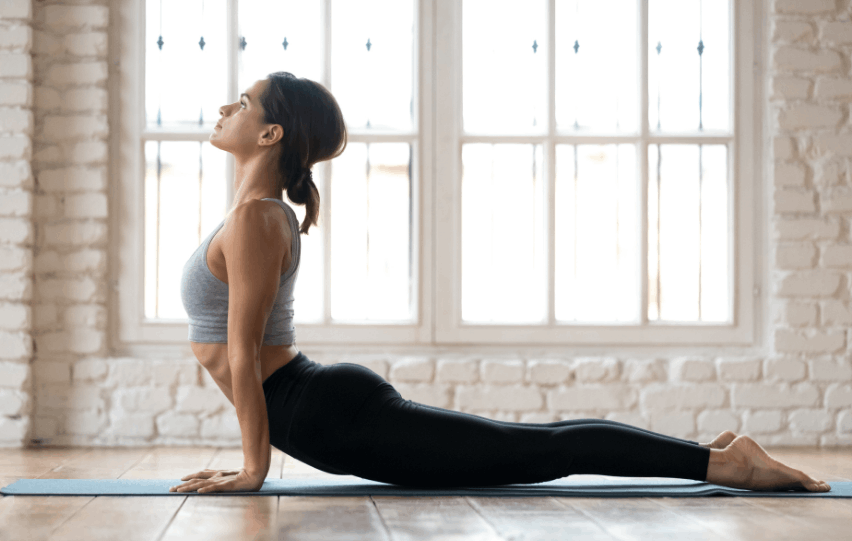One of the main goals of treating asthma, and by extension, asthma attacks, is to help individuals live and maintain a normal and healthy lifestyle.
Exercise is a vital aspect of improving one’s lifestyle, and people with asthma can especially benefit. Not only does it boost overall health and wellness, but it also promotes better lung capacity.
There are a number of exercises and activities that not only help you to stay in shape and build a strong immune system but also aid in keeping asthma attacks at bay. In this article, we’re going to discuss the myriad ways to exercise to help control asthma.

What Is Asthma?
Asthma is a health condition that mainly affects a person’s lungs. This condition causes individuals to suffer from symptoms such as wheezing, coughing, chest tightness, breathlessness, and more, making it difficult for a person to breathe.

Asthma is a condition that individuals have to live with. However, asthma attacks come and go, and these may be triggered by several factors.
Asthma occurs under a variety of conditions. Apart from being genetic, it can also arise from being exposed to different environmental factors and allergens, such as dust, secondhand smoke, and mold. Lung infections may also be a contributing factor to asthma.
Consult with Your Doctor
Asthma attacks can occur at any time. While its symptoms can be managed and even be prevented with exercise, it is important to be aware of and prepare for the worst that could happen while exercising.
Before doing any physical activity, consult your physician. They will oversee your activities and will help determine the type of exercises you can do with your condition. Your doctor can also be of great help when coming up with action plans on how best to participate in such exercises.
Depending on the type of asthma you have, your doctor will find out what activities you can do and what you should avoid. To do this, they might first conduct a series of tests and help make a treatment plan you can turn to in emergencies.
Swimming to Boost Cardiorespiratory Fitness
Swimming is one of the most recommended forms of exercise for people with asthma primarily because it is one of the physical activities that do not trigger asthma attacks. It is great for helping people to progress their exercises while also improving their breathing control and capacity.

Also, the warm and humid setting is also ideal for individuals with asthma, as it poses fewer health risks. The humid environment is best for reducing dryness within the airways, something that usually occurs when an individual exercises.
Benefits for Asthmatic People
Besides this, swimming is found to help reduce constriction in the airways or the bronchial tubes of the body. In turn, this allows airways to get a little more breathing space over time, giving children and adults alike relief from symptoms, and possibly preventing asthma attacks in the future.
There have been concerns about chlorinated water possibly aggravating symptoms of asthma. However, studies show that there is little to no risk of doing so.
Despite this, individuals who are suffering from asthma and who are interested in swimming are advised to go slow and to proceed with caution at first.
Golf for Proper Posture
Golfing may be the last sport that comes to mind when it comes to improving one’s posture, and by extension, boosting one’s breathwork. However, this is greatly beneficial for your health if you suffer from asthma.

It is very important to work on correct posture when learning how to play golf. As you might know, posture plays a vital role in helping one breathe better.
Other Benefits
Individuals with better posture also have a less restrictive stance, thereby reducing and even relieving symptoms of asthma.
Golf also helps to improve an asthmatic’s health in that it incorporates walking for around five to seven kilometers, not only enhancing heart health through cardiovascular movement and activity but also helping individuals practice endurance and breathwork.
Yoga for Promoting Breathwork and Relaxation
Yoga is one of the gentler approaches to exercise that can prevent asthma attacks. It can provide relief to symptoms because it encourages control of the breath. It also promotes the opening of chest muscles, a factor that contributes to improved breathing.

Yoga also promotes calmness and relaxation, as well as increased body awareness. All of these help in preventing and even in the management of asthma and its attacks.
Breathwork Effects
Yoga helps individuals not only by helping them to find a deeper connection to their breath and become more attuned to their bodies, but also to highlight more effective and efficient breathing approaches.
Some yoga-related breathing exercises include diaphragmatic and pursed ones. Understanding these breathing techniques will help when incorporating breathwork with the yoga poses, or asanas.
Some of the easiest yoga poses and moves worth trying include chest-openers, such as cobra or bridge pose. The forward bend is also ideal to open up the airways.
Pilates for Improving Breathing Techniques

Pilates bears similarities to yoga. However, this is more focused on building more lean muscle and boosting strength in practitioners.
Benefits
What makes Pilates great for asthmatics is that it only requires short bursts of exertion rather than longer and more intensive ones. This means that asthmatics can tolerate this exercise well.
What’s more, Pilates allows individuals with asthma to draw in lots of fresh air, improving not only their lung function but also moving them to work on their breathing techniques.
It focuses on deeper breathing that comes from the rib-diaphragm area.
Walking as a Light to Moderate Exercise
Walking, including moderate to brisk-walking activities, is a relatively low-impact activity. This means that it is quite easy on the body, allowing the individual to breathe well even while getting their heart pumping. This also improves fitness levels while keeping asthma managed.

Individuals who are prone to asthma should only walk during warm and humid weather. The cooler months and the dry air can trigger asthma symptoms, making it much more difficult to walk.
Alternatives
If walking outdoors is not actually possible due to the weather, fret not. This can still be made possible by using the treadmill, an indoor track, or even the stairs in your home.
Bear in mind that when choosing to do this form of exercise, warming up before walking is essential to build up a tolerance.
Hiking for Building Endurance
For those who want a more picturesque approach to exercising, hiking might seem more appealing.

After all, similar to walking, this is a low-intensity workout that still builds endurance even when it is done during a short amount of time.
Benefits
People who have asthma will benefit from hiking not only because it is also quite gentle on the body, but also because it helps expand the chest and improve breathwork.
However, similar to walking, this should only be done in warm weather to prevent triggering asthma attacks or symptoms.
Individuals going on a hike would also do well to research if their track has a high pollen count. This way, they can avoid that route or find alternative paths to cross.
Weightlifting for Strength and Breathwork
At first glance, one would be hard-pressed to agree that weightlifting or resistance training is ideal for asthmatics, especially with the sport typically linked to strenuous activity. This is largely a misconception, what with strength training promoting a host of benefits.

For one, resistance training helps improve muscle strength and fitness through the repetition of exercises.
Benefits and Effects
This also does not pose harm to one’s breathwork as it is mainly a stop-start type of workout, meaning individuals will have time to rest after doing a set of exercises and repetitions.
The key to doing weightlifting for asthmatics is to start slow. This allows you to gauge just how much you can do at any given time.
To begin, you should start with incorporating lighter weights in your routine and building up to more reps, exercising once or twice a week.
Important Considerations for Any Exercise
This is important and should already go without saying: have your medication, like inhalers, with you at all times.

Depending on your treatment plan with your doctor, you might be advised to take a dose prior to beginning your physical activity.
Suggestions
Keep yourself warm. This is essential as asthma triggers are more prominent during the colder season. To prevent this from happening, exercise only during the warm weather or simply stay inside and find an indoor means of exercising from this list.
Likewise, wearing warm clothing, such as a mask, scarf, and even jackets, can be of help when it is cold.
Also, make sure to warm up before every exercise or physical activity to prepare your body for exertion.
The Bottom Line
Asthma attacks can happen anytime, anywhere. Despite living with this condition, individuals with asthma can still manage their symptoms and live a normal life.
If you suffer from asthma and want to enjoy all the benefits of regular physical activity, choose exercises that help to improve breathing control, posture, and have a more gentle tempo. And make sure to consult your doctor prior to starting any new routine.







